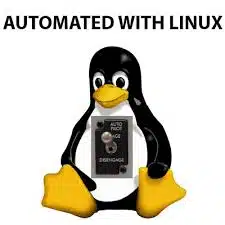- Understanding Automated System Management
- Ansible: Simplicity and Speed
- Key Features of Ansible
- Salt: Speed and Scalability
- Key Features of Salt
- Puppet: Proven Reliability
- Key Features of Puppet
- Choosing the Right Tool
- Conclusion

In today’s fast-paced technological landscape, maintaining and managing Linux systems can be a daunting task, especially for large-scale deployments. Automated system management tools have emerged as essential solutions for streamlining operational processes, reducing human error, and improving efficiency. Tools like Ansible, Salt, Puppet, and others have become staples in the toolkit of system administrators. This article explores the features, benefits, and unique characteristics of these prominent tools, aiding organizations in choosing the right solution for their needs.
Understanding Automated System Management
Automated system management involves the use of software to manage and configure multiple servers or systems without manual intervention. This not only helps in maintaining consistency across different environments but also saves time by automating repetitive tasks such as updates, monitoring, and configuration management.
Ansible: Simplicity and Speed
Ansible, developed by Red Hat, stands out for its simplicity and ease of use. It employs a declarative language that allows users to define the desired state of a system. This straightforward approach makes it accessible to newcomers while still being powerful enough for experts. Ansible operates in an agentless manner, utilizing SSH for communication, which eliminates the need for additional software on target machines. This feature makes it particularly appealing for managing extensive cloud environments or hybrid systems.
Key Features of Ansible
- Agentless Architecture: Reduces overhead and simplifies deployments.
- YAML Syntax: Utilizes human-readable playbooks that streamline configuration management.
- Modular Design: Facilitates the addition of new modules as needed, enhancing functionality.
Salt: Speed and Scalability
Salt, also known as SaltStack, is designed for high scalability and speed. It employs a master-minion architecture, enabling users to manage thousands of systems efficiently. With Salt’s Event-driven automation and remote execution capabilities, system administrators can quickly adapt to changing requirements. Salt also offers a Reactive mode, allowing it to respond in real-time to changes in the environment, making it an excellent choice for dynamic infrastructures.
Key Features of Salt
- Real-time Communication: Supports rapid command execution across multiple devices.
- Flexible Targeting: Allows for granularity in managing numerous systems.
- Extensible Architecture: Provides a framework for customizing and developing new features.
Puppet: Proven Reliability
Puppet is one of the oldest configuration management tools and has a proven track record in large-scale enterprises. It supports both a declarative and imperative style of configuration that gives users flexibility in how they define their infrastructure setup. Puppet’s rich ecosystem of modules and its powerful reporting capabilities make it suitable for complex environments where compliance is critical.
Key Features of Puppet
- Robust Ecosystem: Access to a wide range of community and enterprise modules.
- System Compliance: Ensures systems remain in a desired state, aiding in compliance audits.
- Reporting and Monitoring: Comprehensive dashboards that provide insights into system health.
Choosing the Right Tool
Selecting the appropriate automation tool depends on several factors, including the organization’s size, complexity, and specific needs. Smaller teams may prefer Ansible for its ease of use, while large enterprises might lean towards Puppet for its strong compliance features. For organizations dealing with rapid changes and scalability issues, Salt could be the ideal choice.
Conclusion
The landscape of automated Linux system management is rich with options, each providing unique advantages. Ansible, Salt, and Puppet each offer distinct methodologies and functionalities. Beyond initial setup, these tools support ongoing management, making system administrators’ lives easier and allowing them to focus on more strategic initiatives. As businesses increasingly rely on complex infrastructures, adopting these automated management solutions is no longer just a trend but a necessity for those looking to thrive in a competitive environment. By carefully evaluating each tool’s features and aligning them with organizational goals, professionals can effectively optimize their resource management strategies.